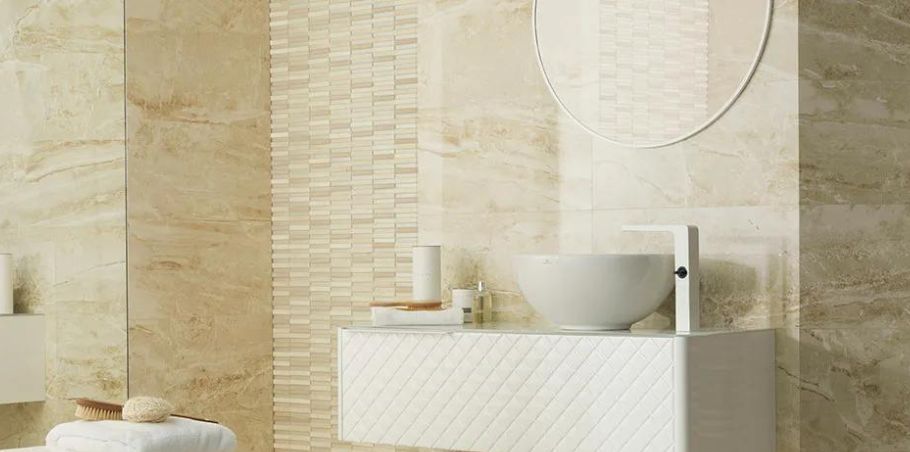Herringbone Tile: Timeless Elegance for Modern Spaces
When it comes to interior design, the choice of flooring or wall tiles can dramatically transform a space. One such tile pattern that has stood the test of time and continues to be a favorite among designers and homeowners alike is the herringbone tile. Whether you’re looking to revamp your bathroom, kitchen, or living room, herringbone floor tile offer a unique blend of elegance and sophistication that is hard to beat. In this article, we’ll dive deep into everything you need to know about herringbone floor tile from their history and design versatility to installation tips and maintenance.
What is Herringbone Tile?
herringbone tile pattern is a classic design pattern that mimics the bones of a fish, particularly the herring, from which it gets its name. The pattern consists of rectangular tiles arranged in a staggered zigzag pattern. This design has its roots in ancient Roman architecture, where it was used for roadways and flooring. The herringbone pattern was later adopted in European homes and palaces, symbolizing luxury and craftsmanship.
Historical Significance
Historically, the Herringbone Tile pattern has been associated with durability and strength. It was a popular choice for roads and pathways in the Roman Empire due to its ability to withstand heavy traffic. Over time, the pattern transitioned from functional use to decorative purposes, becoming a staple in interior design.
Why Choose Herringbone Tile?
The herringbone pattern is renowned for its visual appeal. The zigzag arrangement creates a dynamic flow, making any space feel more sophisticated and stylish. Whether you opt for subtle tones or bold contrasts, herringbone tile pattern can elevate the look of your room effortlessly. One of the major advantages of herringbone tile is its versatility. It can be used in various spaces, from kitchens and bathrooms to living rooms and outdoor areas. Additionally, it pairs well with different design styles, be it modern, traditional, or eclectic.
Types of Herringbone Tile Materials
When choosing the right herringbone tile for your space, the material plays a crucial role in determining the overall look, durability, and maintenance requirements. Here are some popular materials used for herringbone floor tile:
- Ceramic Herringbone Tile: Ceramic tiles are a popular choice for herringbone patterns due to their affordability and wide range of colors and finishes. They are easy to clean and maintain, making them ideal for high-traffic areas like kitchens and bathrooms.
- Porcelain Herringbone Tile: Porcelain tiles are known for their durability and resistance to moisture, making them perfect for both indoor and outdoor use. They offer a more refined look compared to ceramic tiles and are available in a variety of textures, including wood and stone finishes.
- Stone Herringbone Tile: If you’re aiming for a more natural and rustic look, stone tiles like marble, limestone, or travertine are excellent choices. They add a touch of luxury to any space and are highly durable, though they may require more maintenance than ceramic or porcelain tiles.
- Glass Herringbone Tile: Glass tiles are a modern and sleek option for herringbone patterns. They reflect light beautifully, making spaces appear larger and brighter. However, they are best suited for wall applications as they can be slippery when used on floors.
Popular Herringbone Tile Pattern
Herringbone tile pattern are celebrated for their versatility and timeless appeal. Whether you want to make a bold statement or add subtle elegance to your space, there are several herringbone patterns to choose from. Here are some of the most popular herringbone tile pattern:
Classic Herringbone: The classic herringbone pattern is the most common variation, featuring tiles arranged in a simple zigzag. It’s timeless and works well in both contemporary and traditional settings.
Double Herringbone: The double herringbone pattern involves placing two tiles side by side, creating a thicker and more pronounced zigzag. This pattern adds more texture and visual interest to the space.
Diagonal Herringbone: In the diagonal herringbone pattern, tiles are laid at a 45-degree angle to the walls, creating a diagonal effect. This pattern is perfect for small spaces as it adds depth and dimension.
Basketweave Herringbone: Basketweave herringbone is a more intricate variation where tiles are arranged in a way that resembles a woven basket. This pattern is less common but offers a unique and eye-catching look.
Where to Use Herringbone Tile
A Herringbone Tile floor tile backsplash can be a stunning focal point in a kitchen. It adds texture and visual interest, especially when paired with simple cabinetry and countertops. Herringbone floor tile can be used on bathroom walls and floors to create a spa-like atmosphere. Whether you choose a sleek marble or a more rustic stone, the pattern will add elegance to the space. For a modern twist, consider using herringbone floor tile on a living room accent wall. This application draws the eye and adds a layer of sophistication to your décor. Herringbone floor tile are not just for indoors; they can be used in outdoor spaces like patios and walkways. Porcelain and stone tiles are particularly well-suited for these areas due to their durability.
How to Choose the Right herringbone floor tile for Your Space
The size of the room plays a significant role in choosing the right herringbone tile. Larger tiles can make small spaces feel cramped, while smaller tiles may get lost in a large room. It’s essential to select herringbone floor tile that complement your existing décor. Neutral tones work well with most color schemes, while bold patterns can make a statement in minimalist spaces. Lighting can dramatically affect the appearance of your herringbone floor tile. Glossy finishes will reflect more light, making the space appear brighter, while matte finishes can create a more subdued and cozy ambiance.
Step-by-Step Guide to Installing Herringbone Tile
Before starting your Herringbone Tile floor tile installation, gather all the necessary tools and materials, including tiles, adhesive, spacers, a tile cutter, and grout. Ensure the surface where the tiles will be installed is clean, dry, and level. Any imperfections can lead to a flawed installation. Start by marking the center point of the area and laying the first tile at a 45-degree angle. Use spacers to maintain consistent gaps between the tiles. Once the tiles are set, apply grout between them using a rubber float. Wipe off excess grout with a damp sponge and allow it to dry before sealing.
Tips for a Perfect Herringbone Tile Installation
Align your first tile with a center line to ensure the pattern remains consistent and symmetrical throughout the space. Spacers are crucial for maintaining even gaps between the tiles. This ensures a professional-looking finish. Accurate tile cutting is essential for achieving a seamless herringbone pattern, especially around edges and corners.
Common Mistakes to Avoid When Installing herringbone floor tile
Always do a dry layout before applying adhesive. This allows you to visualize the pattern and make adjustments as needed. Inconsistent grout lines can ruin the appearance of your Herringbone Tile pattern. Use spacers and take your time during the grouting process. Poorly cut tiles can disrupt the flow of the herringbone pattern. Invest in a quality tile cutter and measure carefully before cutting.
Herringbone Tile Maintenance
Herringbone floor tile are relatively easy to maintain. Regular sweeping and mopping with a mild detergent will keep them looking pristine. Some materials, like natural stone, may require sealing to prevent stains and water damage. Re-seal these tiles every few years for optimal protection. If a tile becomes chipped or cracked, replace it promptly to maintain the integrity of the pattern. Keep a few extra tiles on hand for such repairs.
What’s the Difference?
While both Herringbone Tile and chevron tiles create a zigzag pattern, herringbone floor tile are rectangular and overlap, whereas chevron tiles are cut at an angle to form a continuous V-shape. Herringbone floor tile are slightly easier to install as they don’t require precise angle cuts like chevron tiles. However, both patterns require careful planning and execution. Generally, herringbone floor tile are more affordable than chevron tiles, particularly because of the simpler cutting process. However, costs can vary depending on the material and installation complexity.
Cost of Installing herringbone floor tile
The cost of herringbone tile materials can vary widely based on the type of tile you choose. Ceramic tiles are generally the most affordable, while natural stone tiles tend to be pricier. Labor costs for herringbone tile installation are typically higher due to the complexity of the pattern. Expect to pay more for professional installation compared to simpler tile patterns. While DIY installation can save money, herringbone floor tile require precision and experience to get right. Hiring a professional may be worth the investment for a flawless finish.
Modern and Minimalist Spaces
In modern and minimalist spaces, Herringbone Tile floor tile in neutral tones can add texture without overwhelming the design. Think white subway tiles arranged in a herringbone pattern for a clean and contemporary look. In traditional settings, herringbone floor tile made from rich materials like marble or wood can enhance the classic feel. Pairing these tiles with antique furniture and fixtures can create a timeless aesthetic. For those who love to make a statement, herringbone floor tile in bold colors or contrasting grout can create a vibrant and eye-catching design. This works particularly well in eclectic and artistic spaces.
FAQs About Herringbone Tile
Is herringbone floor tile Expensive?
Herringbone tile can vary in cost depending on the material and installation. While ceramic options are affordable, natural stone or custom tiles can be more expensive.
Can Herringbone Tile Be Used Outdoors?
Yes, herringbone tile can be used outdoors, especially if you choose durable materials like porcelain or stone. Just ensure proper installation to withstand weather conditions.
How Long Does Herringbone Tile Installation Take?
The installation time for herringbone tile depends on the size of the area and the complexity of the pattern. It typically takes longer than standard tile installations due to the precision required.
What Size Tile is Best for Herringbone Patterns?
Rectangular tiles are best for herringbone patterns, with common sizes including 3×6 inches or 4×12 inches. However, the size can vary based on your design preference.
Is Herringbone Tile Hard to Maintain?
Herringbone tile is generally easy to maintain, especially when sealed properly. Regular cleaning and occasional re-sealing for natural stone tiles will keep them looking great.
Conclusion
Herringbone Tile floor tile are a versatile and timeless option for anyone looking to add elegance and sophistication to their home. Whether you’re updating a kitchen backsplash, installing a new bathroom floor, or creating an accent wall, the herringbone pattern offers endless possibilities. With the right materials, careful planning, and a little bit of patience, you can achieve a stunning result that will stand the test of time.
If you gained new insights from this article, explore our blog, Gimkit, for more enlightening content.
Share this content:














Post Comment